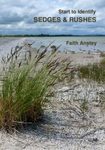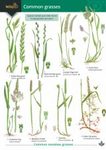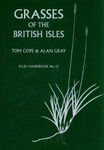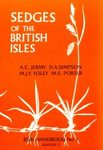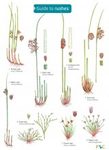![Sedges: Uses, Diversity, and Systematics of the Cyperaceae Sedges: Uses, Diversity, and Systematics of the Cyperaceae]()
Click to have a closer look
About this book
Customer reviews
Biography
Related titles
About this book
The sedge family (Cyperaceae) is one of the 10 largest families of flowering plants, with over 5000 species and 108 genera. Sedges grow on every continent except Antarctica. They occur in habitats ranging from marshes to deserts, and they dominate many ecosystems, including tundra and savanna. Some species are habitat-specific, narrowly distributed, and of conservation concern, whereas others are ubiquitous weeds that occur in a variety of environments. Many species fill key ecological roles, and others are economically important. Yet, sedges remain poorly known. Their reduced flowers and complicated patterns of morphologic variation make the identification of these fascinating plants challenging. As a result, many have avoided the study of sedges as too difficult.
Over the past decade, a marked upsurge of interest in sedges has occurred. Professional botanists, conservationists, and students have made rapid strides in understanding the ecology, economics, taxonomy, and phylogeny of the Cyperaceae. As the proceedings of the first international conference devoted to sedges, Sedges: Uses, Diversity, and Systematics of the Cyperaceae is a keystone of sedge literature. This volume contains 14 chapters authored by internationally renowned experts in sedge biology. Many facets of sedges are covered, both as reviews of current knowledge and as reports of original research. Topics include ethnobotany, weeds, biogeography, floristics, conservation, ecology, genetic diversity, phylogeny, and taxonomy. Both taxonomic and geographic coverage are broad: Carex to Uncinia, and boreal North America to Amazonia. Field exploration, analysis of morphologic data, molecular systematics, and allozyme analysis are among the diversity of techniques featured in this book.
Customer Reviews
Biography
Robert F. C. Naczi is Curator of North American Botany at The New York Botanical Garden, and formerly Curator of the Claude E. Phillips Herbarium at Delaware State University. He studies the systematics of Cyperaceae, especially the taxonomy, geographic distribution, and phylogeny of North American Carex. His research also focuses on the systematics, relationships with arthropod symbionts, and conservation of the Western Hemisphere Pitcher plants (Sarraceniaceae).
Bruce A. Ford is Curator of Vascular Plants at the University of Manitoba Herbarium and professor in the Department of Biological Sciences. He works on the systematics of Carex focusing on the taxonomy, population genetics, and phylogeny of this genus. In addition to his research on sedges, he studies the genetic structure of dwarf mistletoes (Arceuthobium spp.) and their coniferous hosts. He has also authored a number of treatments for the Flora of North America.


















![Catálogo de la Flora Relictual del Valle Geográfico del Río Cauca [Catalog of the Relictual Flora of the Geographical Valley of the Cauca River]](http://mediacdn.nhbs.com/jackets/jackets_resizer_medium/24/245138.jpg?height=150&width=100)

![Catálogo de la Familia Poaceae en la República Argentaina [Catalogue of the Poaceae Family in the Argentine Republic]](http://mediacdn.nhbs.com/jackets/jackets_resizer_medium/37/37816.jpg?height=150&width=105)


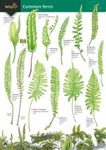

![Start to Identify Grasses [enlarged edition]](http://mediacdn.nhbs.com/jackets/jackets_resizer_medium/24/249274.jpg?height=150&width=112)
